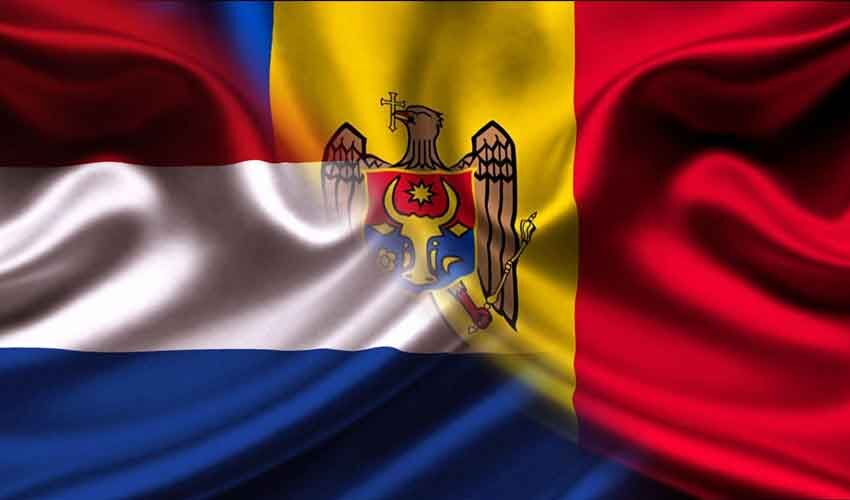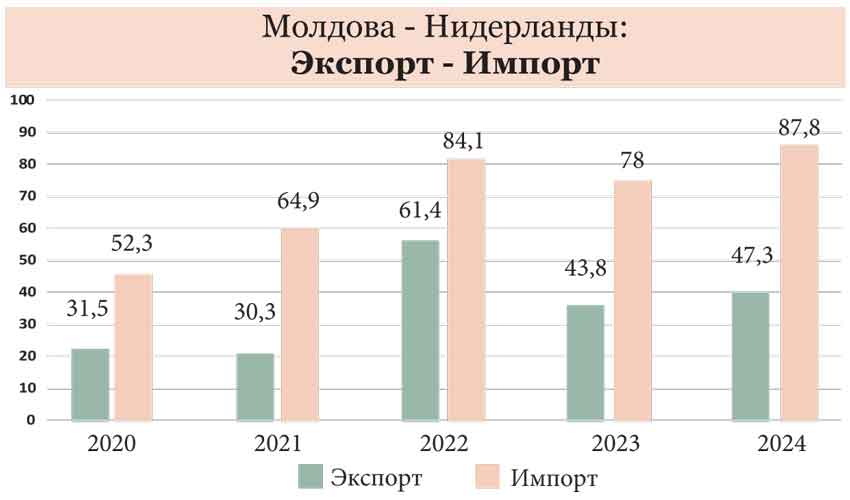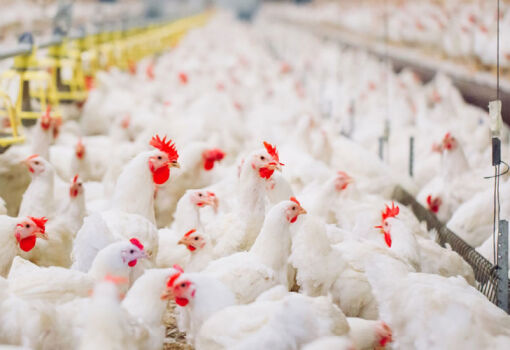
With a population of 18.23 million and a GDP per capita of €59,936, the Netherlands is among the most developed economies in Western Europe.
In contrast, the Republic of Moldova, with a population of 2.48 million and a GDP per capita of 7,177 euros, is in the process of economic development and transformation, seeking to utilize European support and its internal potential for economic growth.
With two major ports (Amsterdam and Rotterdam), the Netherlands is the 10th largest importer in the world. It is also called the “gateway to Europe”. From there, goods are distributed to all EU countries. Now Moldovan products are supplied to Europe most often through Romanian intermediaries. But sending large shipments by sea is much cheaper, even taking into account the fact that loading will be in the Black Sea port of Giurgiulesti.
At the same time, it should be taken into account that the Netherlands is the 3rd largest investor in Moldova with an indicator of $516 million and is among the 15 largest trade partners of our country. There are 144 companies with Dutch capital working in Moldova.
Over the last five years, Moldova’s imports from the Netherlands increased by 67,8%, and exports to the Netherlands – by 50,2%. The balance of trade for our country is negative.
Moreover, if imports from the Netherlands increase evenly, exports from Moldova “jump”: in 2020 – 31.5 million euros, in 2024 – 47.3 million, but in 2022 managed to “jump” to 61.4 million. Such an impressive dynamics was largely due to the emergence of exports of goods from HS 1512 group – sunflower, safflower or cotton oil – the volume of supplies of which in 2022 amounted to 21.663 million euros. In previous years, exports under this code were not registered.
The Netherlands is the EU’s second largest exporter of agro-industrial products. And since Moldova considers itself an agrarian state, very curious options are possible on this very path.
So far, the export of agricultural products from Moldova to the Netherlands is about half of the total volume. And it is in this area that we managed to achieve a surplus in the trade balance in 2022. At the same time, it should be noted that food imports from the Netherlands to Moldova are steadily and evenly increasing every year.
Approximately the same picture is observed in the segment of non-food products.
Food products dominate the structure of Moldovan exports. They account for 20.55 million euros of shipments (43.4% of the total volume). The main positions are wine, sunflower seeds, fresh fruits and grapes.
Textile exports worth €7.86 million account for 16.6% of total exports. And industrial products with a volume of 5.38 million euros (11.4%) closes the top three.
The analysis of the export potential, carried out by experts invited by the Investment Agency, revealed significant opportunities for expansion, especially for goods with growing demand in both directions.

For example, insulated electrical wires and cables, bottled wine, fruit juices, fresh fruit (apples, apricots, plums) as well as textiles (T-shirts, sweaters) and furniture showed positive growth. These goods have high competitive potential in the context of demand in the Netherlands for agri-food and value-added industrial products.
To successfully enter and succeed in the Dutch market, companies can use a combination of direct and indirect export methods. Each approach has its own advantages and challenges that require careful evaluation, taking into account the company’s specific situation and objectives.
Direct exporting involves selling goods or services directly to customers in the Netherlands from the country of origin. This strategy provides greater control over the sales process and customer relationships, but requires a comprehensive understanding of the local market.
Indirect exporting involves working with intermediaries such as agents or distributors. This approach reduces risks and initial investments, and ensures that goods from Moldova are distributed to all nearby countries.
Valerian Moraru, Counselor at the Embassy of the Netherlands in Moldova, drew attention to the financial opportunities existing for Moldovan companies that want to enter the Dutch market. For example, a company from our country, which wants to work in a segment that combines commercial interests with socio-economic effect, can receive subventions of up to 620 thousand euros (a local partner-leader of the project will be needed).
The advisor listed several similar combinations, with financing of up to 5 million euros, explaining that specific consultations are needed for each position.



